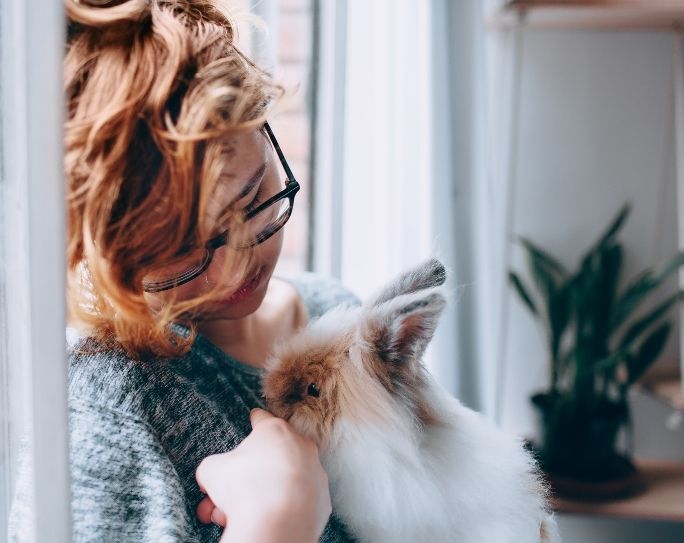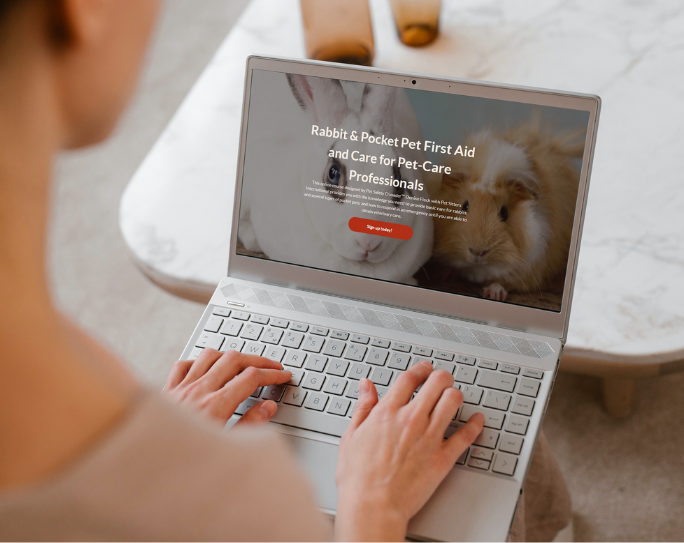Rabbit-care basics for professional pet sitters

While accurate, up-to-date statistics on pet rabbit ownership are difficult to find, it’s highly possible that as a professional pet sitter you’ll eventually get a request for rabbit sitting. As with other pet owners, rabbit owners consider their companion animals members of the family and strive to find quality care for their fur kids when they have to leave them for any period of time. By familiarizing yourself with rabbit-care basics, you’ll be better prepared to decide if you want to offer rabbit-sitting services and will have a better understanding of the questions you should ask before deciding to accept a particular rabbit assignment.
So, as a professional pet sitter, what should you know about rabbit care?
Initial consultation prior to rabbit-sitting assignment
As with pet-sitting assignments for any type of pet, scheduling an initial consultation (“meet and greet”) prior to accepting and confirming the rabbit-sitting assignment is very important. Being prey animals, rabbits experience higher stress levels in unfamiliar situations such as dealing with new people or places. During the initial consultation, you will want to inquire about the housing set-up, exercise and feeding routines. This is also a good time to familiarize yourself with the disposition of the rabbit you will be caring for. Personalities may range from mellow or timid to aggressive.
Again, as with any type of pet, you should ask for detailed instructions for care, routines, location of supplies and emergency procedures. Always be sure you also have up-to-date contact information for the client, the preferred veterinarian and a nearby friend or relative to serve as an emergency contact.
Entering the home for the pet-sitting assignment
When you arrive at the home for the rabbit-sitting visit, make an effort to enter quietly and avoid sudden movements that might frighten easily startled bunnies.
If possible, avoid having odors from other pet sits on your clothing, as dog or cat odors may signal danger to rabbits. Loud thumping of the back feet may be one indicator that the rabbit feels alarmed. Others may include laying back their ears, rapid respiration, widening of the eyes and flattening their bodies to the ground.
While at the visit, you’ll also want to keep your personal, chewable belongings inaccessible to curious rabbit teeth.
Basic care during the pet-sitting assignment
Food and water. Keeping the diet consistent is one of the most important aspects of rabbit sitting. A sudden change in amounts or type of food can cause digestive problems from soft, sticky feces to gastrointestinal stoppage, which can be fatal. Follow the feeding instructions you were given very carefully, and if you are sitting for a multiple rabbit household, be sure to observe varied diets and amounts of food indicated.
Different rabbits can have diverse dietary requirements and it is important that you do not overfeed or succumb to “treat begging.”
Also, remember that water is extremely important. Keep bowls and bottles filled and refreshed, and check bottles at each visit for clogging or air locks. In below-freezing temperatures, make sure outdoor rabbits have properly measured food and unfrozen drinking water. Living outdoors requires more attention to caloric intake, especially in colder temperatures.
Litter and cleaning. A pet sitter may encounter many litter setups, from litter boxes to slide-out pans or drop-through screens in outdoor hutches. Used litter is usually disposed of daily to avoid unhealthy ammonia inhalation. Often, house rabbits have multiple litter boxes in cage and exercise areas.
Even a well-trained rabbit leaves a few fecal pellets here and there. In the case of accidents, full strength, white vinegar works best to clean and neutralize urine from fabrics, floors or carpet.
Housing and exercise. Typical housing arrangements are cages, pens, free roam of one or more rooms, or outdoor hutches. Rabbits are territorial and can become aggressively protective of their cages or pens. Although most experienced rabbit owners have rabbit-proofed their homes, keep an eye out for chewing of unsafe items such as plastic, carpet or electrical wiring. Paper and cardboard are safe for chewing.
During their time out/exercise time, rabbits will often exhibit excited jumping and running behavior. These actions are just the rabbit having fun! If a rabbit escapes or is difficult to round up after playtime, never chase; enticement with a favorite food works best. Also keep in mind that rabbits are vulnerable to high temperatures and heat stroke. In weather above 85º F or 29º C, keep their environments cool. If necessary, place frozen, water-filled plastic pop bottles in the cage or pen.
It’s also important to understand that not all rabbits get along well together. During exercise time, follow multiple-rabbit instructions carefully. Not doing so could result in fights with serious injuries or unwanted pregnancies.
Proper handling of rabbits
When feeding or reaching for bunnies, approach from above and not directly in front of their faces, where short-range vision is limited and a blind spot present. A startled rabbit may lunge, bite or scratch.
A rabbit must be handled correctly; an insecurely held rabbit could jump free and fall or kick and break its delicate spine. To carry properly, use a firm, under the abdomen lift with one hand, while wrapping the other arm around and in front of the head, cradle-style, close to your body, to prevent the rabbit from jumping. To release, set the rabbit down haunches first and facing toward you. Never pick a rabbit up by the ears or scruff of the neck.
For pet-care professionals interested in learning more, PSI offers an online course, Rabbits & Pocket Pets First Aid & Care for Pet Care Professionals. PSI members, be sure to use your member coupon code for discounted pricing.
Additional resources:
For more information on rabbits and their care, visit these sites:
- House Rabbit Society
- Ontario Rabbit Education Organization (OREO)
- Australian Companion Rabbit Society
- Rabbit Welfare Association (U.K.)
Pet sitters, what other tips would you provide regarding rabbit care and rabbit sitting? Share your tips in the comments below.








Comments
Susan Sabot
Karen Villeneuve
Regina Jenkins
Susan Deisher
Shona Hetherington
It would be wonderful if you had a Pet Profile sheet for Rabbits or other small animals x